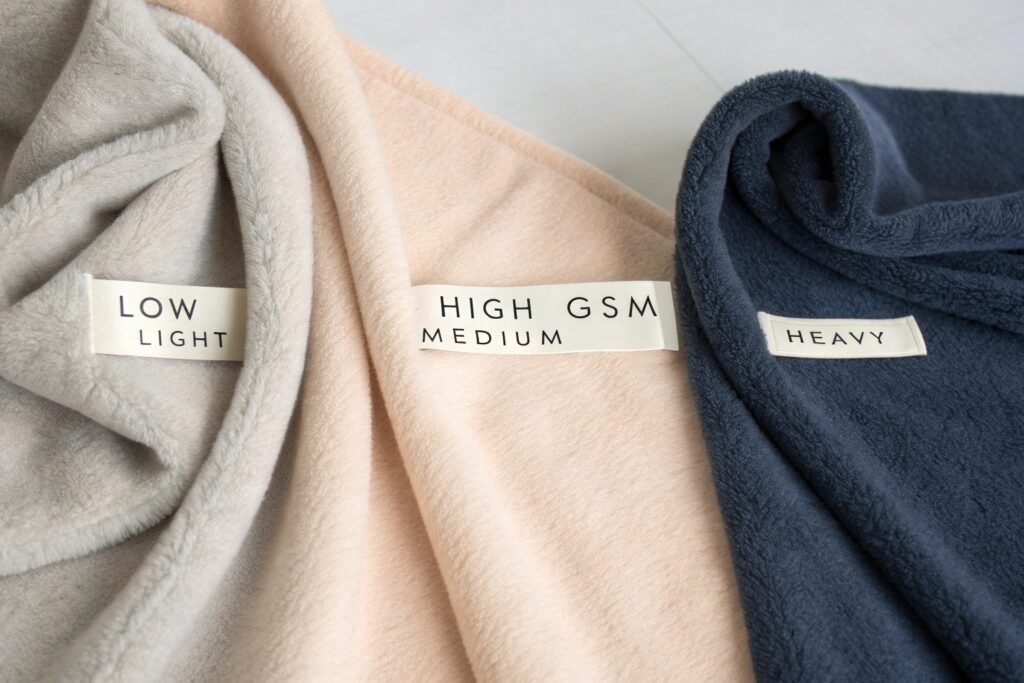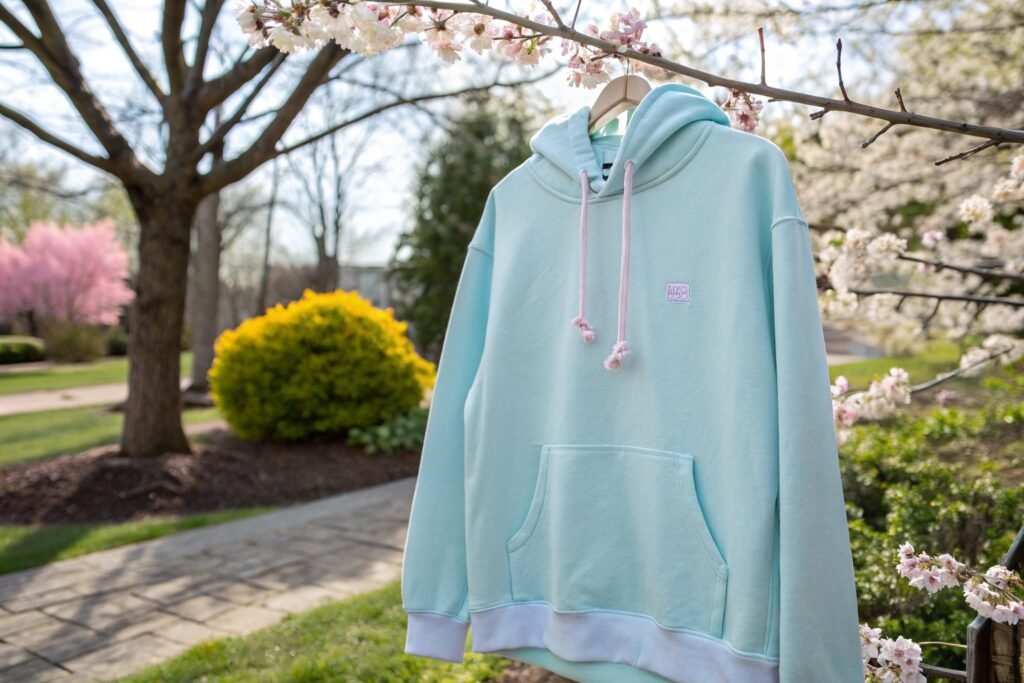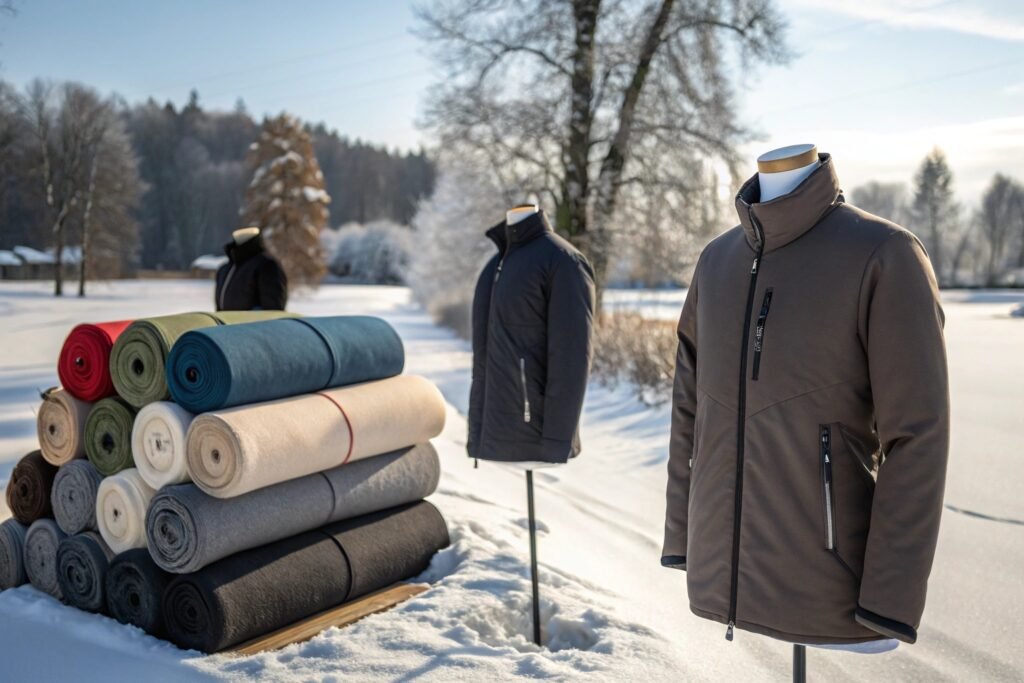When choosing fleece for garments, one key metric determines warmth, weight, and overall feel: GSM. Whether you're sourcing for hoodies, outdoor wear, or baby blankets, selecting the right GSM (grams per square meter) for the season is essential to deliver comfort and functionality.
The optimal GSM range for fleece fabric depends on the season—lightweight 130–200 GSM is best for spring/summer, midweight 200–300 GSM for autumn, and heavyweight 300–450+ GSM for winter wear.
Understanding GSM not only helps reduce overproduction and returns, but it also ensures buyers receive seasonally appropriate, breathable, and cost-effective fleece products.
What Does GSM Mean in Fleece Fabric?
GSM is more than just a number—it directly affects your product’s drape, insulation, and price. But not every brand understands its deeper impact.
GSM (grams per square meter) refers to the weight of the fabric per square meter, which reflects the density and thickness of fleece. Higher GSM equals more warmth but also more bulk.

How Is GSM Calculated for Fleece?
Manufacturers determine GSM by weighing a pre-cut fabric swatch, usually 10x10 cm or 50x50 cm, then extrapolating to per-square-meter values. A reliable fleece factory should have GSM balancing scales and lab-tested consistency.
You can explore this step-by-step GSM testing method used in commercial settings.
Why Is GSM Crucial for Apparel Sizing and Fit?
Higher GSM means thicker fabric, which affects garment sizing, stretch recovery, and seam behavior. If you use 380 GSM fleece for a pattern designed for 240 GSM, it might feel too snug or stiff. That’s why GSM matching is essential in bulk production. Sewport breaks down how GSM impacts fit and cut in manufacturing.
Which GSM Range Is Ideal for Spring and Summer?
Warm weather doesn’t mean fleece is obsolete. Lightweight fleece still plays a role in breathable layering and sun protection.
For spring and summer fleece garments, 130–200 GSM is optimal. This ensures breathability, soft drape, and minimal insulation for transitional or indoor use.

What Products Use Low GSM Fleece?
130–160 GSM is perfect for fleece t-shirts, sleepwear, and baby rompers. 180–200 GSM suits thin hoodies, athletic pullovers, and light jackets.
Brands like Uniqlo use this range for air-tech fleece and breathable indoor wear.
How Can You Improve Durability in Lightweight Fleece?
Lower GSM means more potential for pilling or transparency. Opt for anti-pilling finishes, double brushing, or blending with polyester for durability. See Polartec’s lightweight fleece guide for technical options that improve lifespan.
What GSM Should Be Used for Autumn Fleece Apparel?
Autumn calls for mid-weight warmth that allows breathability while providing protection from chills. This is where fleece shines.
Fleece fabrics between 200–300 GSM strike the perfect balance of warmth and mobility for autumn outerwear, layering, and casual styles.

What Autumn Products Match 200–300 GSM?
Classic fleece hoodies, zip-up jackets, lounge sets, and jogging pants fall into this category. A 260 GSM brushed fleece works well for activewear while 280 GSM is ideal for daily outerwear.
Check out Columbia Sportswear for examples of midweight fleece products optimized for seasonal wear.
How to Maintain Consistency in Midweight GSM?
Factories should perform batch-to-batch GSM verification and wash-test shrinkage control. If not managed, GSM may vary due to moisture retention or finishing processes. Learn about GSM control in fabric mills at Fibre2Fashion.
What GSM Range Works Best for Winter and Cold Climates?
Cold-weather fleece needs to insulate while maintaining comfort and moisture control. This is where heavy GSM shines.
For winter garments, 300–450 GSM fleece ensures adequate thermal insulation, ideal for outdoor gear, ski wear, and lined workwear.

Which Products Require Heavy GSM Fleece?
350 GSM fleece is widely used in performance base layers, while 400–450 GSM works well for thermal-lined parkas or double-layer jackets. Look at The North Face for high-GSM fleece outerwear.
How Does High GSM Affect Cost and Shipping?
Higher GSM not only increases fabric cost but also raises shipping weight, affecting import duties and air freight. It’s key to optimize width yield and choose compact packaging. Review this logistics impact of GSM article for tips on reducing freight impact.
Conclusion
Choosing the right GSM for seasonal fleece products isn’t just a technical detail—it’s a strategic move. It affects comfort, inventory efficiency, shipping costs, and end-customer satisfaction.
By aligning GSM range with garment type and climate, you’ll reduce return rates, enhance brand reputation, and optimize fabric sourcing. Whether you're aiming for breathable summer fleece or thermal-grade winter gear, understanding GSM helps you source smarter, not harder.










